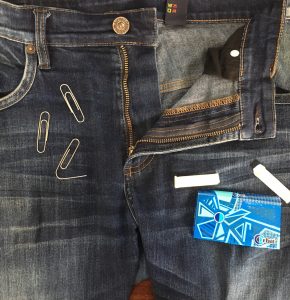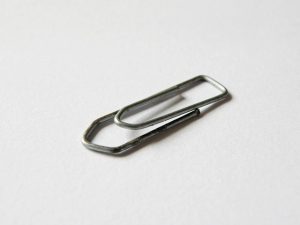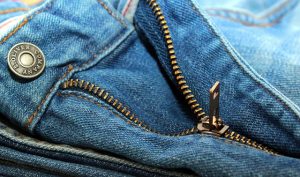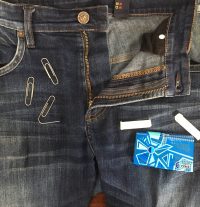 In uncertain times, you should strive to be prepared for any situation. The more prepared you are, the better off you’ll be, but the truth is no one is 100% prepared for a survival scenario.
In uncertain times, you should strive to be prepared for any situation. The more prepared you are, the better off you’ll be, but the truth is no one is 100% prepared for a survival scenario.
Sure, you may have a survival bag ready to grab at a moment’s notice, a place to retreat to with all the supplies you’ll need for months, and a system in place to contact or meet with family and loved ones, but all it takes is one weak link for that chain to snap.
One of the most important elements of survival is the ability to work with whatever you have on you at that moment. To improvise with knowledge, experience and a scientific understanding of how things work. In some cases, you may only have the clothes on your back, the items in your pocket and nature to work with.
In this series, we look at the many survival uses for 3 household items, and how the properties that make them can help you think your way out of a dire situation.
How to survive with:
A paper clip
Chewing gum
A pair of jeans
How to Survive with a Paperclip

This malleable piece of metal is one of the most important items you can have in a survival kit. They’re tough to break, they don’t melt (easily), they’re tensile, reflective, magnetic, lightweight and sharp. If you don’t have paper clips in your survival kit, add them now.
Fishing hook
A paper clip has a sharp enough point to pierce the flesh of most small fish. Bending the clip is easy enough to do with fingers and should stay relatively straight after piercing through the meat.
Additionally, if you’re in a watery area, there will likely be pebbles. Grab a small pebble and bend the paper clip around it, Doing this will give you a rounded bend in the clip, spreading the force across a larger surface, decreasing the stress on one single point and giving you a stronger hook to pull with.
Paperclips are also good at reflecting sunlight. The reflection of the sun on the metal will double as a lure.
Picking locks
In a really big SHTF scenario, you may need to break into something. Whether it be your house, tool box, or tornado shelter, it’s important you have the means to get in. Two paperclips can help you with that.
Of course, it’s useless to try and pick a lock unless you know how, so I recommend you watch this short video explaining the basics of lock picking.
Finger/Toe Splint
The last thing you want in a survival moment is an injury. If not properly taken care of it can distract you, impair you and in some cases kill you. A paperclip won’t help when splinting a leg, but it can easily take care of a toe or finger.
If you have a small paperclip, force it so that it is straight. I recommend also bending the point facing you so you don’t risk stabbing yourself with it. Grab some grass, vines or bendable twigs and wrap them around your finger securing the paperclip underneath your injured digit. Don’t make it so tight that you lose circulation, but make it tight enough that the finger can’t be bent. Tie off the grass, vines or bendable twigs so that they don’t come loose.
Fixing glasses
If you require corrective lenses, you’re only as useful as your glasses; times of peril don’t bode well for the blind.
Paperclips are malleable and tensile. If your glasses are broken at the hinge, stick a paper clip where the screw should go. Bend it around the hinge a few times and make sure it’s tight enough that it won’t fall back off or go loose.
Cleaning your fingernails
This one sounds silly, but it’s more important than keeping your nails pretty. If you’re depending on a paperclip to help you through a tough spot, it’s unlikely you’ll be around soap and water for awhile. Whatever you can do to stop the spread of a disease, do it.
Compass
I’m breaking the rules with this one as it requires more than a paperclip, but it’s an absolute necessity when it comes to survival. For this, you’ll need a paperclip, a magnet, a leaf and a body of calm water.
Find a puddle, break out your handy dandy paperclip and extend it out so that it is straight. I recommend slightly bent one point of the clip so you can identify your North and South direction.
Holding it by the bent end, repetitively run the paper clip in the same direction over the magnet for a good 10 minutes. This will propagate a magnetic current through the paperclip, turning it into a compass needle.
Place a leaf in the water, then place the paperclip on top of the leaf. The direction the pointed end of the paperclip turns to is true magnetic north.
Here’s a video that can explain it better:
How to Survive with Chewing Gum

Getting sticky, chewed gum on your fingers is one of the worst sensations in the world, but I’m hoping you can get over that pretty quickly in a survival situation.
A piece of gum’s worst qualities is the best in a survival situation. It’s sticky, ductile, tasty, and hygienic.
Repairs
Use chewing gum to plug holes in water-bottles, stop a leaky radiator, fix your glasses. Gum’s ability to stretch and stick when wet, then harden when dry makes it an important must-use item when you’re unprepared.
Bug repellent
A lot of die hard survivalists swear by this, but chewing gum can be used to repel insects and small pests from plant-beds, entrance ways, and even bags of food.
Simply take a fresh piece of spearmint gum and place it in close proximity to any supplies you find. It may not dissuade bears from having a sniff, but it’ll help keep away the smaller, immediately less deadly threats.
Recover lost items
“Life. Death. Taxes. Getting gum on the bottom of your shoe.” It doesn’t quite roll off the tongue, but it’s a certainty. Gum is sticky and stretchy, which is bad when you inadvertently step on it, but good when you’ve lost something you can’t reach.
Stick a chewed piece of gum to the end of a stick and use it as a makeshift ‘Extendo-Claw.’ It won’t work for pulling a Volvo out of a riverbed, but it may work for other, much smaller items you drop or come across.
Bait
We went over this already with the paper clip, but with gum on the end, you have something far nicer than a makeshift lure. Catfish, minnows and some crabs commonly consume chewing gum.
Now minnows won’t keep you well fed, but they’re certainly a step up from the fish you catch with chewing gum. Ah, the wonders of the food-chain.
Stay focused
Cortisol is a chemical released by the brain during times of high stress. It causes us to get the jitters, easily frustrated and lose focus. Fortunately, Gum can help.
The U.S. National Library of Medicine National Institutes of Health reports that chewing gum can reduce the secretion of cortisol in times of stress. The best mind to have in a time of disaster is a calm one, and doing whatever you can to get into that mindset is important.
How to Survive With a Pair of Jeans

IMPORTANT NOTE: Clothing is your first and most important defense against the elements. They’ll keep you warm, protected from predators, cuts, scrapes and other dangerous variables in the wild.
Be smart with everything you have on you, especially clothes. You can improvise without chewing gum and a paper clip, but jeans are an extremely important item that you may need for much longer than you anticipate. Utilize these tips with care and proper judgment.
Emergency Flotation Device
Take off your jeans and tie the bottom of the legs together into a square knot. Following that, grab the trousers by the waist and swing them over your head to capture as much air as possible before pulling them underwater. Pull the trouser legs over your head, and hold the waist of the trousers against you. The inflated legs will keep you afloat.
Be sure to keep splashing water onto the trouser legs. If the legs dry you will begin to sink.
Here’s another detailed video from BlackScoutSurvival on how to perform this technique.
Tourniquet/First Aid
As I mentioned at the start, clothing is a very important shield from the ferocity of nature. You shouldn’t be cutting up your jeans for a bruise, but if your leg is bleeding profusely, you’re going to need a tourniquet more than a cover.
Assess the situation. See how much of fabric you’ll need to cut off circulation. If it’s in an arm wound, you should be able to tie off with 1.5 to 2 feet of fabric (about the length from your ankle to your knee). With a thigh wound, you’ll probably need the full length of the leg.
You’ll want as much force across as little surface area as possible for a tourniquet, so tear off the denim and roll it up like you’re rolling newspaper. Place the rolled denim tourniquet at least 1-2 inches above the traumatized tissue. Tie a single knot, then lay any large, long rod-like object you can find across it. Complete the double knot over the rod and twist the rod in a clockwise direction so that circulation and bleeding is stopped.
A tourniquet can cause necrosis if left on for too long, so beware.
Start a Fire
Most jeans have metal rivets attached to them. It depends on the quality of the jeans, but these rivets can be removed and used to start a fire in a similar fashion to a flint and stone. There are plenty of other, more dependable ways to start a fire, but this is certainly a good tip to keep in mind.
Saw Blade
Zippers are pretty durable and tough. They have to withstand years of abuse from opening and closing. This will likely cause some damage to your jeans, but removing that zipper gives you at least two metal teethed saws that could cut through wood, small animal bones, and if you’re really persistent, a friction based fire starter
The best survival tip is to always be prepared. Never step out of your comfort zone without a plan to put yourself back in it. These tips are for fun and for thinking, not for trying.
If you’d like some more survival tips on household items, you can download our ebook ‘1001 Uses For Household Items’ here.
